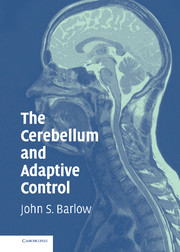Book contents
- Frontmatter
- Contents
- Preface
- Acknowledgments
- PART ONE ANATOMY AND PHYSIOLOGY OF THE CEREBELLAR SYSTEM
- PART TWO CEREBELLAR FUNCTIONS
- 7 Cerebellar Memory, Long-Term Depression, and Long-Term Potentiation
- 8 The Vestibulocerebellum and the Oculomotor System
- 9 The Cerebellum and Cognition
- 10 Timing Functions, Classical Conditioning, and Instrumental Conditioning
- 11 Cerebellar Pathology in Humans and Animals: Genetic Alterations
- 12 Specialized Cerebellum-Like Structures
- PART THREE MODELS AND THEORIES
- PART FOUR SUMMARY AND CONCLUSIONS
- APPENDIX A A Hybrid Analogue/Digital Multiplexer/Multiplier-Based Adaptive Signal Processor
- Author's Note
- Bibliography
- Index
8 - The Vestibulocerebellum and the Oculomotor System
Published online by Cambridge University Press: 28 October 2009
- Frontmatter
- Contents
- Preface
- Acknowledgments
- PART ONE ANATOMY AND PHYSIOLOGY OF THE CEREBELLAR SYSTEM
- PART TWO CEREBELLAR FUNCTIONS
- 7 Cerebellar Memory, Long-Term Depression, and Long-Term Potentiation
- 8 The Vestibulocerebellum and the Oculomotor System
- 9 The Cerebellum and Cognition
- 10 Timing Functions, Classical Conditioning, and Instrumental Conditioning
- 11 Cerebellar Pathology in Humans and Animals: Genetic Alterations
- 12 Specialized Cerebellum-Like Structures
- PART THREE MODELS AND THEORIES
- PART FOUR SUMMARY AND CONCLUSIONS
- APPENDIX A A Hybrid Analogue/Digital Multiplexer/Multiplier-Based Adaptive Signal Processor
- Author's Note
- Bibliography
- Index
Summary
The Flocculonodular Lobe (the Vestibulocerebellum)
The flocculonodular lobe is the oldest part of the cerebellum (i.e., the archicerebellum). It occupies the major portion of the primitive cerebellum (e.g., in the lamprey and urodele amphibia; Nieuwenhuys 1967), as indicated in Chapter 2. Further, it is with the flocculonodular (posterior) lobe of the cerebellum that the vestibular nuclei of the brain stem are most closely associated (Brodal and Jansen 1954). Correspondingly, among the afferent fibers to the flocculonodular lobe, the vestibular ones are the most significant. Primary or direct vestibular fibers (i.e., from the end-organ, the vestibular organ) reach the flocculus, nodulus, and the adjoining part of the uvula, as well as the fastigial nucleus and the lingula. Of these, the nodulus is a later phylogenetic development than the flocculus. It appears that, whereas primary vestibular fibers decrease in phylogenesis, secondary fibers undergo an increase.
In a study of the climbing fiber projection to the rat flocculus and adjacent ventral paraflocculus, Ruigrok, Osse, and Voogd (1992) found that two parts of the inferior olive (the dorsal cap of Kooy and the ventrolateral outgrowth) are both connected with a set of two alternating zones of floccular/ventral parafloccular Purkinje cells, suggesting that these zones reflect functionally distinct and discrete units related to specific aspects of visuomotor control.
- Type
- Chapter
- Information
- The Cerebellum and Adaptive Control , pp. 100 - 117Publisher: Cambridge University PressPrint publication year: 2002



